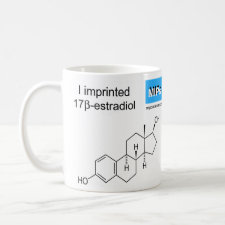
Authors: Sai N, Wu YT, Sun Z, Huang GW, Gao ZX
Article Title: Molecular imprinted opal closest-packing photonic crystals for the detection of trace 17β-estradiol in aqueous solution.
Publication date: 2015
Journal: Talanta
Volume: 144
Page numbers: 157-162.
DOI: 10.1016/j.talanta.2015.05.079
Alternative URL: http://www.sciencedirect.com/science/article/pii/S0039914015300357
Abstract: A novel opal closest-packing (OCP) photonic crystal-á(PC) was prepared by the introduction of molecular imprinting technique into the OCP PC. This molecular imprinted (MI)-OCP PC was fabricated via a vertical convective self-assembly method using 17β-estradiol (E2) as template molecules for monitoring E2 in aqueous solution. Morphology characterization showed that the MI-OCP PC possessed a highly ordered three-dimensional (3D) periodically-ordered structure, showing the desired structural color. The proposed PC material displayed a reduced reflection intensity when detecting E2 in water environment, because the molecular imprinting recognition events make the optical characteristics of PC change. The Bragg diffraction intensity decreased by 19.864 a.u. with the increase of E2 concentration from 1.5 ng mL-1 to 364.5 ng mL-1 within 6 min, whereas there were no obvious peak intensity changes for estriol, estrone, cholesterol, testosterone and diethylstilbestrol, indicating that the MI-OCP PC had selective and rapid response for E2 molecules. The adsorption results showed that the OCP structure and homogeneous layers were created in the MI-OCP PC with higher adsorption capacity. Thus, it was learned the MI-OCP PC is a simple prepared, sensitive, selective, and easy operative material, which shows promising use in routine supervision for residue detection in food and environment
Template and target information: 17β-estradiol, E2
Author keywords: 17β-estradiol, aqueous solution, molecular imprinting, Opal closest-packing photonic crystal



Join the Society for Molecular Imprinting

New items RSS feed
Sign-up for e-mail updates:
Choose between receiving an occasional newsletter or more frequent e-mail alerts.
Click here to go to the sign-up page.
Is your name elemental or peptidic? Enter your name and find out by clicking either of the buttons below!
Other products you may like:
 MIPdatabase
MIPdatabase









